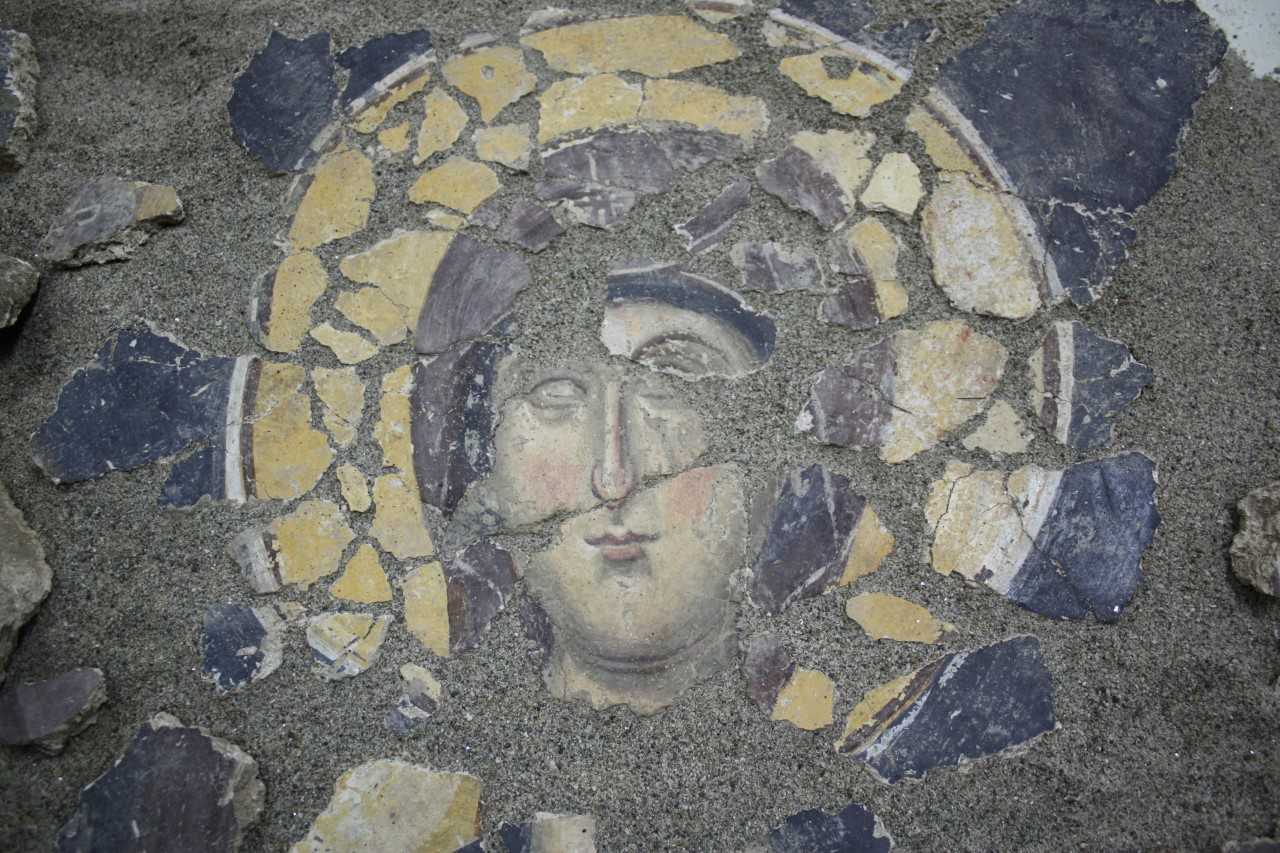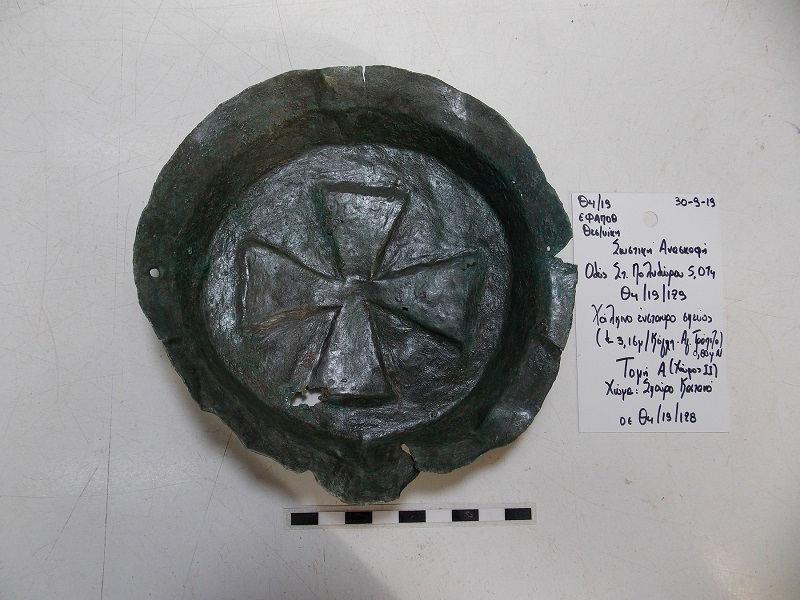
A 13th-century church and a cemetery were discovered on the Acropolis inside the ancient walls of Thessaloniki, the Greek Ministry of Culture announced on Tuesday.
Among the ruins, the high altar of the church was uncovered as well as frescoes from the sanctuary area that include several that have a gold leaf coating. Bronze coins and ceramics were also found.

The cemetery near the church contains 57 burials of infants, children and adults.
Archaeologists say that of particular interest are two burials of particularly large men, whose height approaches two meters, and the grave of a pregnant woman, where her bones and the skull of a fetus in the position of childbirth were found.
The Greek ministry says that the cemetery and the church with a polygonal shape were founded after the middle of the 13th century.
This original building underwent a second construction phase at the beginning of the 14th century, specifically around the years 1310-1330.

Church and cemetery discovered inside the Walls of Thessaloniki
Archaeologists say that it is the first time that a cemetery was discovered on the Acropolis of Thessaloniki.
The Acropolis stands at the highest point inside the 4-kilometer-long city walls that surrounded the city of Thessaloniki during the Middle Ages and until the late 19th century, when large parts of the walls, including the entire seaward section, were demolished as part of the Ottoman authorities’ restructuring of Thessaloniki’s urban fabric.
The city was fortified from its establishment in the late 4th century BC, but the present walls date from the early Byzantine period, ca. 390, and incorporate parts of an earlier, late 3rd-century wall.
At the beginning of the 4th century, Galerius and Constantine the Great passed through Thessaloniki and strengthened the walls. At the end of the 4th century, a second wall was built outside the previous one with triangular projections. The wall visible today was built from the end of the 4th to the middle of the 5th century.

The walls consist of the typical late Roman mixed construction of ashlar masonry alternating with bands of brick.
The northern part of the walls adjoins the acropolis of the city, which formed a separate fortified enceinte, and within it lies another citadel, the Heptapyrgion (Seven Towers), popularly known by the Ottoman translation of the name, Yedi Kule.
In 1988, as part of the Paleochristian and Byzantine monuments of Thessaloniki, the walls were added to the UNESCO World Heritage List because of their outstanding Byzantine architecture.
See all the latest news from Greece and the world at Greekreporter.com. Contact our newsroom to report an update or send your story, photos and videos. Follow GR on Google News and subscribe here to our daily email!



